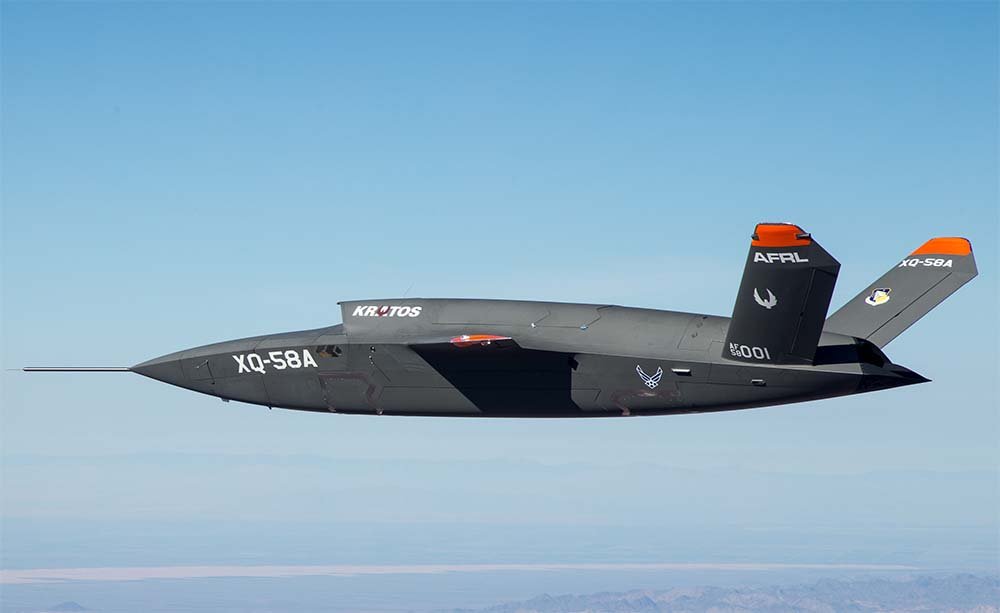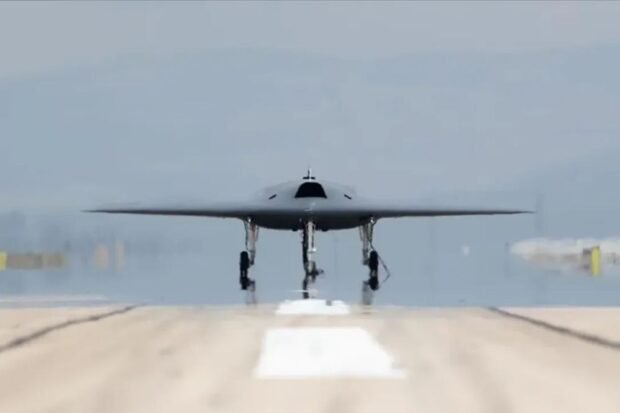The Indian Future Unmanned Fighter Aircraft (FUFA) project is a key initiative in India’s pursuit of next-generation combat capabilities, combining strategic ambition and indigenous innovation in aerospace technology. We investigate the conceptual origins, technical evolution, strategic significance, current development status, and implications for India’s defence posture of FUFA. It will provide a detailed, factually grounded analysis of the most significant aspects.
The Origins and Vision of FUFA
The “Make in India” campaign has consistently supported India’s defence modernisation efforts by emphasising autonomy and local manufacturing. The motivation for a Future Unmanned Fighter Aircraft is rooted in a number of vital innovations:
The Tejas Light Combat Aircraft (LCA) and Advanced Medium Combat Aircraft (AMCA) programmes provided valuable insights into the technological challenges and delays encountered.
Drones have revolutionised battlefield dynamics in global conflicts like the Russia-Ukraine war, as evidenced by the rapid proliferation of unmanned aerial vehicles (UAVs) and unmanned combat aerial vehicles (UCAVs).
India’s acknowledgment of the changing nature of threats—ranging from sophisticated air defence systems to electronic warfare—requires platforms that optimise operational flexibility and reduce human risk.
The Indian government and the Defence Research and Development Organisation (DRDO) responded by outlining FUFA as a two-engine, stealthy, advanced unmanned fighter project meant for deep strike missions, air superiority tasks, and connected battlefield operations.
Architecture and Technical Objectives
FUFA is designed to be a genuine UCAV, overcoming the limitations of traditional drones or remotely piloted vehicles. Core technical objectives include:
Stealth Design: FUFA is designed with a low radar cross-section (RCS) in mind, incorporating sophisticated composite materials, internal weapon bays, contoured edges, and radar-absorbent coatings.
High Performance: A projected maximum speed that exceeds Mach 1.5, high-g manoeuvrability, and super cruise capabilities, all of which are facilitated by twin indigenous turbofan engines. These engines may be variants that have evolved from the Kaveri or future engine projects.
Autonomy: Advanced data links, machine learning algorithms, and next-generation onboard artificial intelligence for semi-autonomous and swarming modes, capable of real-time tactical decisions, threat evaluation, and either independent or operator-directed engagement.
Network-Centric Warfare: Missions that work together with support roles next to aircraft like the AMCA and Su-30MKI, and easily connect with piloted fighters, ground control stations, satellites, and other network resources.
India’s acknowledgment of the changing nature of threats—ranging from sophisticated air defence systems to electronic warfare—requires platforms that optimise operational flexibility and reduce human risk
Payload Versatility: Internal compartments are designed to balance firepower and safety, allowing for the use of precision-guided weapons, air-to-air missiles, surveillance equipment, and
Industry Partnerships and Development Milestones
The Aeronautical Development Agency (ADA) and DRDO collaborated closely to publicly delineate FUFA in mid-2023. HAL and private-sector participation were supported under the Strategic Partnership policy. Important milestones consist of:
The initial design studies and simulation of aerodynamic profiles at the Bengaluru establishment of ADA.
The validation of stealth shaping and control surface responses was achieved through wind tunnel testing of small-scale models.
Early engine bench-testing was conducted to evaluate the thrust-to-weight ratios necessary for sustained supersonic flight.
Prototyping endeavours are anticipated to commence in 2026-2027, provided that effective funding and the resolution of technical bottlenecks (particularly engine maturity and AI software reliability) are achieved.
Parallel projects, such as the Stealth Wing Flying Testbed (SWiFT) demonstrator, which was successfully flew in 2022, function as stepping stones, validating critical design features that are intended for FUFA. Additionally, subsystem development is informed by limited technology transfer dialogues with nations that possess advanced UCAV expertise (e.g., France, Russia, Israel) within legal and strategic constraints.
Battlefield Roles and Strategic Imperative
The strategic rationale for FUFA is based on a variety of military requirements:
FUFA can conduct risk-intensive operations without direct pilot exposure through using adversary anti-access/area denial (A2/AD) systems to penetrate heavily defended airspace.
Force Multiplication: The efficacy of manned aircraft is multiplied, and enemy defences are overwhelmed by swarm tactics, loyal wingman concepts, and independent strike packages.
Parallel projects, such as the Stealth Wing Flying Testbed (SWiFT) demonstrator, which was successfully flew in 2022, function as stepping stones, validating critical design features that are intended for FUFA
Reconnaissance and Electronic Warfare: Modular payloads enable the execution of dynamic tasks, such as real-time intelligence and the suppression of enemy air defences (SEAD).
Armed and Unarmed Missions: The adversary’s planning is complicated, and operational versatility is enhanced by adaptability across strike, air-to-air combat, interference, and surveillance.
The unique operational spectrum of India significantly influences its requirements, encompassing high-altitude Himalayan regions bordering China, maritime hazards in the Indian Ocean, and the necessity of day/night, all-weather missions.
Bottlenecks and Obstacles
The development of an indigenous unmanned fighter presents significant obstacles:
Jet Engine Technology: India has historically struggled with the development of core engines. Although the Kaveri project demonstrated indigenous potential, the development of sustainable, fuel-efficient, and dependable engines for supersonic unmanned combat air vehicles (UCAVs) is a formidable challenge.
Onboard Artificial Intelligence: Robust AI that is capable of threat analysis, real-time tactical navigation, and adaptive learning in adverse electronic warfare environments still necessitates significant computational advancements and research and development. This is known as onboard artificial intelligence.
Stealth Materials and Preservation: The indigenous development and mass production of high-performance composites and radar-absorbing coatings necessitate collaboration with new materials science partners.
FUFA can conduct risk-intensive operations without direct pilot exposure through using adversary anti-access/area denial (A2/AD) systems to penetrate heavily defended airspace
Systems Integration: The ongoing engineering challenges of ensuring the seamless operation of flight controls, payload management, and battlefield networking are significant.
Risks to Budget and Timeline: The history of high-tech aerospace projects in India is characterised by cost overruns, technology gaps, and shifting priorities—risks that extend to FUFA unless proactive project management and adequate funding are ensured.

Comparative Global Positioning
Globally, the drive for unmanned next-generation fighters is evident in programmes such as
the Tempest Loyal Wingman and Project Mosquito of the United Kingdom, the US Air Force’s Skyborg and XQ-58 Valkyrie are autonomous strike drones that are enabled by AI, Russia’s Okhotnik UCAV builds upon the incorporation of the Su-57 for manned-unmanned teaming and China’s GJ-11 Sharp Sword is designed for stealth strike missions and operates from carriers.
Although these programmes capitalise on sophisticated industrial ecosystems, India’s FUFA attempts to advance by incorporating insights from indigenous LCA, UAVs (including Rustom-II and Archer), and collaborative ventures. Success will be contingent upon the integration of domestic accomplishments with selective learning from international paradigms.
The initial full-scale FUFA demonstrators are expected to be operational by the late 2020s, with operational induction projected for the early 2030s if development proceeds as anticipated. The Indian Air Force doctrine is becoming more receptive to unmanned platforms, and testbed experimentation on manned–unmanned teaming is currently ongoing simultaneously with the development of AMCA
Timeline and Future Prospects
The initial full-scale FUFA demonstrators are expected to be operational by the late 2020s, with operational induction projected for the early 2030s if development proceeds as anticipated. The Indian Air Force doctrine is becoming more receptive to unmanned platforms, and testbed experimentation on manned–unmanned teaming is currently ongoing simultaneously with the development of AMCA. Future improvements could include satellite-assisted control for extended-range missions, quantum sensor cargo, and directed energy weapons.
Summing up, India’s FUFA programme encapsulates its aspirations to achieve strategic autonomy and technological parity in the dynamic crucible of global aerospace innovation. Its successful execution guarantees not only the survivability of high-risk missions and advanced battlefield capabilities, but also significant developments in critical defence technology that will enable self-reliance. The project’s advancement represents a major step in the development of India’s military aviation ecosystem, as it has the potential to reshape regional power dynamics and reinforce national security priorities for the foreseeable future, despite the significant technical, budgetary, and industrial obstacles.
The writer is the Publisher of Frontier India and the author of the book Foxtrot to Arihant: The Story of Indian Navy’s Submarine Arm.






